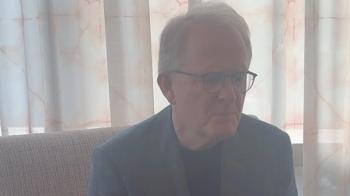
- Oncology Vol 28 No 1S
- Volume 28
- Issue 1S
(P151) Poor Long-Term Sexual Recovery With Neoadjuvant Androgen Deprivation Therapy (NADT) Plus Radiotherapy: Results of a Multicenter, Prospective Study
Long-term effects of neoadjuvant androgen deprivation therapy (NADT) with radiotherapy (RT) on patient-reported health-related quality of life (HRQOL) have not been characterized in prospective multicenter studies. We evaluated the effects of NADT on HRQOL for 2 years among patients undergoing RT for newly diagnosed prostate cancer.
Hiram A. Gay, MD, Jingxia Liu, PhD, Jeff M. Michalski, MD, Daniel A. Hamstra, MD, PhD, John T. Wei, MD, Rodney L. Dunn, Eric A. Klein, MD, Howard M. Sandler, MD, Chris Saigal, MD, Mark Litwin, MD, Deborah Kuban, MD, Larry Hembroff, PhD, Meredith Regan, Peter Chang, MD, Martin G. Sanda, MD, the PROSTQA Consortium; Washington University; University of Michigan; Cleveland Clinic; Cedars-Sinai Medical Center; University of California; UT MD Anderson Cancer Center; Michigan State University; Dana-Farber Cancer Institute; Beth Israel Deaconess Medical Center
Purpose: Long-term effects of neoadjuvant androgen deprivation therapy (NADT) with radiotherapy (RT) on patient-reported health-related quality of life (HRQOL) have not been characterized in prospective multicenter studies. We evaluated the effects of NADT on HRQOL for 2 years among patients undergoing RT for newly diagnosed prostate cancer.
Methods: The Prostate Cancer Outcomes and Satisfaction with Treatment Quality Assessment (PROST-QA) Consortium is a prospective, multi-institutional study at nine university-affiliated clinical sites across the US, wherein pretreatment demographic, cancer severity, and treatment details were recorded in a web-based database. HRQOL is measured with the Expanded Prostate Cancer Index Composite (EPIC)-26 questionnaire via a computer-assisted phone interview (CATI) at pretreatment and at 2 months, 6 months, 1 year, and 2 years after the start of NADT. Differences in patient-reported HRQOL were observed between pretreatment and 1 year and 2 years after NADT start (and before definitive RT), with significant differences evaluated by paired t-test.
Results: From among 598 subjects who completed CATI before and 2 years after NADT start, 111 received NADT prior to proceeding with definitive RT. Patients receiving NADT experienced significant impairment in vitality/hormonal (P < .0001), sexual (P < .0001), urinary continence (P = .0005), urinary irritative/obstructive (P = .0001), and bowel (P < .0001) HRQOL after NADT initiation.
Conclusions: Neoadjuvant ADT with RT has clinically significant long-term effects on sexual, vitality/hormonal, and bowel/rectal HRQOL domains. Most profound are the sexual side effects, which also have the least long-term recovery. The hope of long-term improved sexual QOL should not be an argument when comparing RT with NADT and prostatectomy. The significant impact of this therapy on HRQOL needs to be considered before initiating NADT in men.
Articles in this issue
Newsletter
Stay up to date on recent advances in the multidisciplinary approach to cancer.



















































































